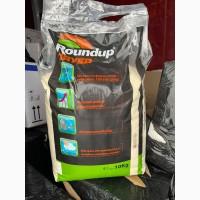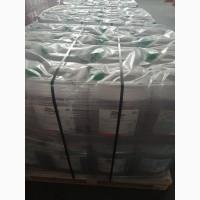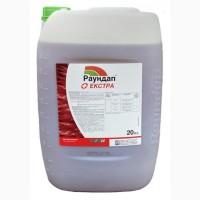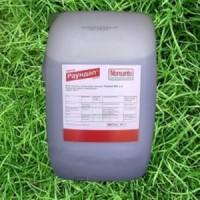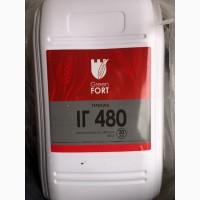/ Fertilizers and means of plant protection / Herbicides / Glyphate (Roundup) - herbicide of continuous actions...
Sell / buy
Glyphate (Roundup) - continuous action herbicide and desiccant, Kievskaya region.
Price5$
Region:all of Ukraine,
Kiev region.
(Vyshhorodok)
Updated:
Glyphate herbicide (analog Roundupa) Rangoli
Systemic post-emergence herbicide of continuous action for the destruction of perennial weeds.
Active substance: isopropylamine salt of glyphosate 480 g/l, in acid equivalent 360 g/l
Mode of action: systemic
Preparative form: soluble concentrate
Packaging: canisters of 20 liters, the price is indicated for 1 liter.
What are the advantages of the herbicide Glyphate
effectively destroys perennial weeds
contributes to the saving of moisture in the soil and the preservation of crop residues on its surface
protects the soil from erosion
increases fertility and improves the physical and chemical properties of the soil.
stabilizes the production of agricultural crops in arid conditions and in regions with unstable moisture.
saving labor and material resources.
The mechanism of action of the herbicide Glyphate
Systemic herbicide of continuous action. The active substance is an inhibitor of the enzymatic system responsible for the synthesis of aromatic amino acids. Getting on the plant, it penetrates through its aerial parts to the root system, blocking enzymatic processes, which leads to the death of weeds.
Recommendations for the use of the drug Glyphat
As a herbicide, the drug is applied by one-time ground spraying of actively growing weeds. The consumption rate of the drug depends on the type of weeds and their development phase. Spraying is carried out 12-14 days before mechanical treatments (cultivation, disking, plowing). Rain within 6 hours after spraying can significantly reduce the effectiveness of the drug. You should not use the drug Glyphate, 48% v.r. if the air temperature is lower than +12°С or higher than +25°С. The consumption rate of the working solution depends on the density of the grass stand and is 200-400 l/ha. It is important to completely and evenly cover the plants with the working solution. When mixed with water, the drug is prone to excessive foaming. For preparation of the working solution tanksprayer fill with water to 3/4 of the volume, add the required amount of the drug and turn on the mixing mode. While continuing to mix, fill the tank with water to the full volume. After treatment with the drug Glyphat, 48% v.r. under optimal weather conditions, plants die after 7–20 days. It is recommended to add Dikban, 48% v.r.c. (0.2-0.5 l/ha).
Regulations for the use of the herbicide Glyphate:
Culture-Weeds-Application rate, kg/l/ha-Method and time of processing
-Multiplicity of treatments-Term of the last treatment (days before harvest)
Rapak(//tractor-service.com)
Desiccation
3.0
Spraying of crops when 70% of the crop pods turn brown.
1
14
Peas
Spraying of crops when 70-75% of beans turn brown.
Soya
Spraying of crops in the phase of the beginning of the browning of beans of the lower and middle tiers (with seed moisture no more than 35-40%)
Sunflower
Spraying crops in the browning phase of baskets
Grains ear crops
Spraying of crops 2 weeks before harvesting at a grain moisture content of no more than 30%
Fields intended for sowing agricultural crops
Perennial weeds, annual weeds
4-6
Spraying vegetative weeds in the fall after harvesting the predecessor or in the spring on vegetative weeds 2 weeks before sowing (before spraying, exclude all mechanical soil treatments, except for early spring closing of moisture)
Pairs
Spraying of growing weeds
Non-agricultural lands
4-8
The rate of consumption of the working solution: aviation — 70-120 l/ha, ground spraying as a herbicide 150-200 l/ha. activities
Systemic post-emergence herbicide of continuous action for the destruction of perennial weeds.
Active substance: isopropylamine salt of glyphosate 480 g/l, in acid equivalent 360 g/l
Mode of action: systemic
Preparative form: soluble concentrate
Packaging: canisters of 20 liters, the price is indicated for 1 liter.
What are the advantages of the herbicide Glyphate
effectively destroys perennial weeds
contributes to the saving of moisture in the soil and the preservation of crop residues on its surface
protects the soil from erosion
increases fertility and improves the physical and chemical properties of the soil.
stabilizes the production of agricultural crops in arid conditions and in regions with unstable moisture.
saving labor and material resources.
The mechanism of action of the herbicide Glyphate
Systemic herbicide of continuous action. The active substance is an inhibitor of the enzymatic system responsible for the synthesis of aromatic amino acids. Getting on the plant, it penetrates through its aerial parts to the root system, blocking enzymatic processes, which leads to the death of weeds.
Recommendations for the use of the drug Glyphat
As a herbicide, the drug is applied by one-time ground spraying of actively growing weeds. The consumption rate of the drug depends on the type of weeds and their development phase. Spraying is carried out 12-14 days before mechanical treatments (cultivation, disking, plowing). Rain within 6 hours after spraying can significantly reduce the effectiveness of the drug. You should not use the drug Glyphate, 48% v.r. if the air temperature is lower than +12°С or higher than +25°С. The consumption rate of the working solution depends on the density of the grass stand and is 200-400 l/ha. It is important to completely and evenly cover the plants with the working solution. When mixed with water, the drug is prone to excessive foaming. For preparation of the working solution tanksprayer fill with water to 3/4 of the volume, add the required amount of the drug and turn on the mixing mode. While continuing to mix, fill the tank with water to the full volume. After treatment with the drug Glyphat, 48% v.r. under optimal weather conditions, plants die after 7–20 days. It is recommended to add Dikban, 48% v.r.c. (0.2-0.5 l/ha).
Regulations for the use of the herbicide Glyphate:
Culture-Weeds-Application rate, kg/l/ha-Method and time of processing
-Multiplicity of treatments-Term of the last treatment (days before harvest)
Rapak(//tractor-service.com)
Desiccation
3.0
Spraying of crops when 70% of the crop pods turn brown.
1
14
Peas
Spraying of crops when 70-75% of beans turn brown.
Soya
Spraying of crops in the phase of the beginning of the browning of beans of the lower and middle tiers (with seed moisture no more than 35-40%)
Sunflower
Spraying crops in the browning phase of baskets
Grains ear crops
Spraying of crops 2 weeks before harvesting at a grain moisture content of no more than 30%
Fields intended for sowing agricultural crops
Perennial weeds, annual weeds
4-6
Spraying vegetative weeds in the fall after harvesting the predecessor or in the spring on vegetative weeds 2 weeks before sowing (before spraying, exclude all mechanical soil treatments, except for early spring closing of moisture)
Pairs
Spraying of growing weeds
Non-agricultural lands
4-8
The rate of consumption of the working solution: aviation — 70-120 l/ha, ground spraying as a herbicide 150-200 l/ha. activities
|
Магазин, контакты | |
Юрій / отзывы, инфо. / оценка активности | |
|
Phone:
+38(xxxxxx
show
| |
All user ads ~1000 | |
Ad ID: #998463
(added by a registered user, registration date: 10-08-2016)
Added / Updated: 29-10-2025 09:26 (current, until: 10-29-2026)
Permanent ad address:
Showed / watched for today: ?, total: ?


